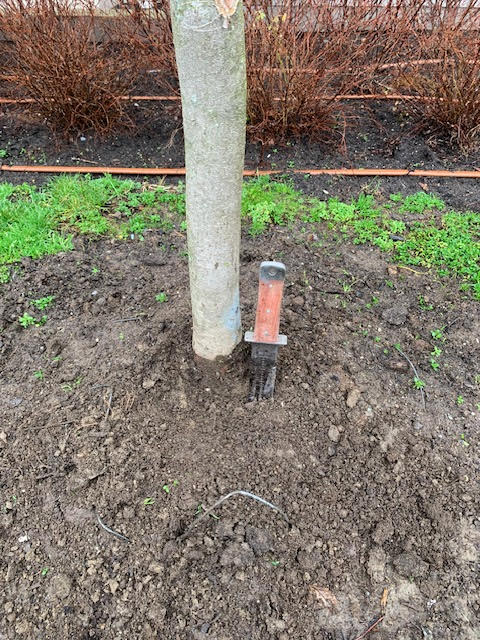Update on my 2021 blog post
Yesterday, on the way home I stopped by a site to check on the progress of our project. I published my post in September 2021 and on my last visit in 2023 everything looked fine. Briefly, there was a gap in a Berberis shrub and the kids would run through it and turn left to go play in the fields. However, there was a problem.
Just beyond the Berberis gap was a cedar hedge which hid the kids from view for exiting cars. The drivers wouldn’t see the kids until the last few seconds. And while I don’t recall any fatalities, there were several close calls.
Enough close calls for the strata to call for a solution.
Natural solution
I’ll be honest, this was an exciting, small project. It involved plants and saving kids’ lives. Sign me up.
Now, Berberis is widely available in local nurseries and it’s reasonably priced. I think we planted only three specimens so it wasn’t a huge hit for the strata; my labour charges were a different story.
Why Berberis? Because it’s already there making a big, mature hedge. The prickles on the plant are soft so if any of the kids decided to cheat and run through the gap, they would feel it but they wouldn’t lose any blood.
When I checked on this gap last year (2023), it looked fine. The new specimens were slower than the existing hedge so the gap was closing nicely but mainly from the top. Which was good enough for me.

Disappointment
Yesterday, on my follow-up visit, I was disappointed. Take a look and you’ll understand why.

The three specimens I planted in 2021 showed signs of being cut and trampled. The tops on both sides were also pruned back. Now, I have no idea what exactly happened. Sometimes strata management changes; and so do their wishes. Perhaps some parents wanted the gap opened up again but I doubt it. Remember the close calls with cars?
I suspect the kids frequenting the gap sabotaged the plants; and then somebody asked the current landscape contractor to prune the sides. Whatever the case, somebody ruined this project. Red Seal isn’t saving kids’ lives anymore. Too bad. I tried.


















